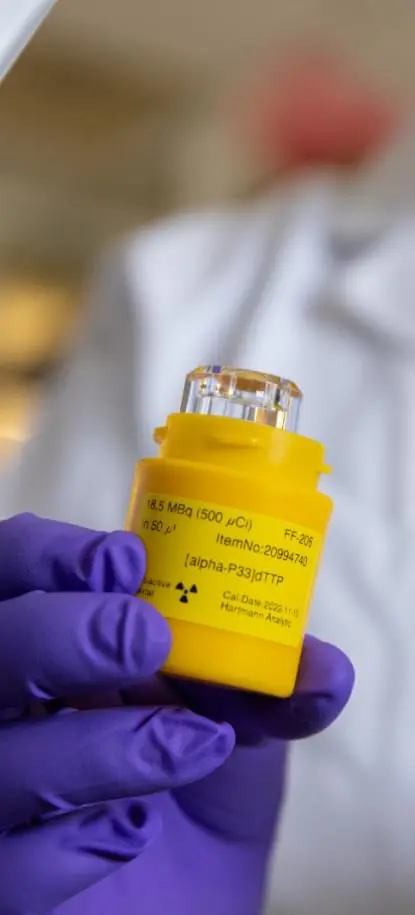




Quick Links:







Procurement of stand-alone sealed sources and unsealed radioactive substances (i.e. single orders or multiples orders) can only occur with a valid Radiation Use Authorization (RUA) and is done via the current procurement system. Following approval of the shopping cart by the RUA holder, the procurement team requests approval from the RSO before completing the purchase order.
All shipments of stand-alone sealed sources and unsealed radioactive substances are picked up by NRRC’s authorized carrier at King Abdulaziz International Airport in Jeddah and delivered to the Radiation Labeling Core Lab (RLCL) or designated hazardous storage building directly.
For more information, please refer to the Radiation Safety Manual chapter 5: Procurement, Receipt, and Transfer of Radiation Sources.
The RLCL management is responsible for security of the radioactive substances kept in the RLCL. The RSO is responsible for radioactive sources kept in the designated radioactive waste storage building. Under special conditions, some RUA holders are permitted to use Uranyl Acetate or Uranyl Nitrate for staining slides in electron microscopy within their laboratory’s premises. The corresponding RUA holder is responsible to keep the stock of the uranyl compounds locked away and secured in their laboratory. RUA holders must ensure work environments are established for the safe use of the Uranium materials as specified in the respective RUA and the uranyl compound lab safety information.
Access to the area where stand-alone sealed sources or unsealed radioactive substances are present must be restricted (e.g. door lock or proximity access) to prevent unauthorized use or removal of radioactive substances. Examples of methods of securing unattended radioactive sources include locking/restricting entry to the laboratory and locking the refrigerators or cabinets where radioactive sources are stored when they are not in use. If non-authorized users are permitted in the laboratory, they must be under the supervision of an authorized user at all times.
Any loss or potential loss of radioactive substances must be reported to the RSO as soon as possible after the loss is suspected.
The nuclear and Radiological Regulatory Commission (NRRC) consider all uranium compounds including uranyl compounds as radioactive materials and thus require a Radiation Use Authorization before ordering and using. KAUST Regulations prohibits the purchase these compounds directly from the vendor without an approval from the RSO and the IRSC.
Please consult with the Radiation Safety Officer before ordering or using uranyl compounds, even if you only plan to use very small amounts or concentrations. The RSO must include your uranium materials in the overall University inventory and will work with you to assist you applying for an RUA for radioactive material.
The following radioisotopes fact sheets provide information about each radioisotope’s physical characteristics (half-life, emissions and energies), dose rates and shielding needs, detection requirements, special precautions, and waste disposal requirements: